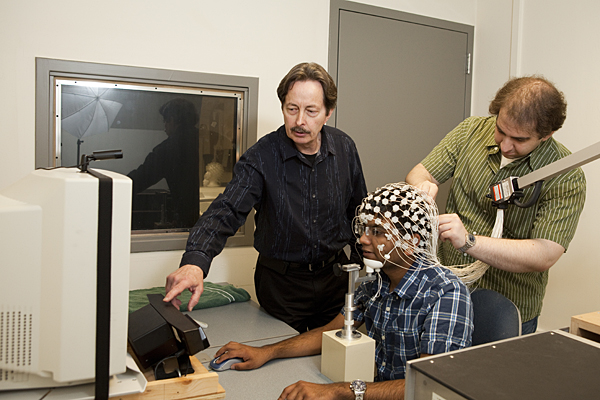


Keeping track
UD psychologist studies ability to follow moving objects
2:45 p.m., April 25, 2011--For drivers on a busy highway or workers in an airport control tower, paying attention to a number of moving objects can be a matter of life or death, but researchers know that most people can keep track of only four such items at the same time.
James Hoffman, professor of psychology at the University of Delaware, is hoping to learn why some people are better at tracking multiple moving objects—following five or six as accurately as most people follow three or four—and if it's a skill that can be developed.
Research Stories
Chronic wounds
Prof. Heck's legacy
The National Science Foundation recently awarded Hoffman a three-year, $370,602 grant to continue and expand his multiple object tracking (MOT) research, whose goal is to learn what specific mechanisms the brain uses to follow objects.
"I think that tracking multiple objects is something that human beings are fairly good at doing, but in a number of tasks, it generally seems to be limited to four," Hoffman said. "But because there are individual differences, the question becomes: Are there ways to become better at this?"
Some research has found that people who play certain types of video games, specifically involving shooting at moving targets, are better at tracing multiple objects. "This suggests that it might be possible to practice MOT and get better," Hoffman said.
In his lab, a research subject wears a cap containing 129 sensors that rest on the scalp and measure brain activity while he or she tracks images as they dart about on a computer screen. A device that sits in front of the screen records the subject's eye movements during the task. Some of the images—which move at different speeds and in seemingly random directions—are identified as ones the subject should target, while the others are distracters.
"These are complex tasks, but we think we have a brain-recording system that is sensitive to the different mechanisms involved," Hoffman said. "Understanding the basic brain mechanisms responsible for MOT is the best approach to ultimately being able to design training methods for improving tracking ability."
Article by Ann Manser
Video by Ann Manser and Andrea Boyle
Photo by Ambre Alexander








